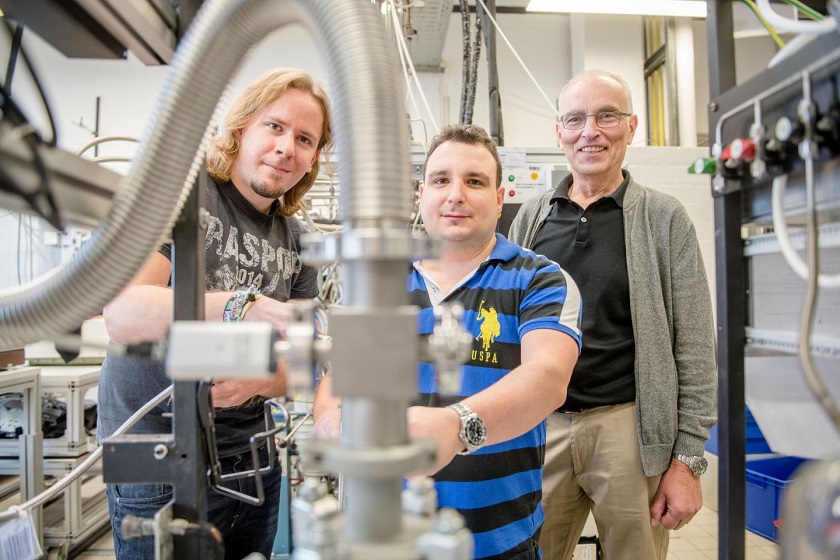CLOUD
German researchers build new molecule that changes properties through light
In the field of computer engineering, magnetically switchable materials play a significant role in data storage. A team from the Cluster of Excellence Ruhr Explores Solvation at Ruhr-Universität Bochum (RUB) has developed and manufactured a novel molecule called 3-methoxy-9-fluorenylidene. What's special about it: its magnetic properties can be controlled through the light of different colors. This might be of use for the supercomputer industry.
The researchers working with Professor Wolfram Sander at the Chair of Organic Chemistry II outline their findings in the journal "Angewandte Chemie" on 14 August 2019.
Broad application range of magnetic materials
Magnetism is indispensable in computer engineering. Magnetism controls, for example, the information flow from the computer to magnetic storage media such as hard disks. Moreover, magnetic storage devices use read/write heads in the form of magnets that identify (i.e. read) or alter (i.e. write) the magnetization patterns on the hard disk.  {module In-article}
{module In-article}
Methoxy group controls magnetic properties
Developed by Wolfram Sander and his team, the organic molecule 3-methoxy-9-fluorenylidene is based on a fluorine scaffold with a methoxy group attached in the shape of a rotational tail.
The researchers have figured out that the molecule's magnetic properties are determined by the orientation of the methoxy group, which changes its conformation depending on the kind of light that hits it.
Blue light switches the methoxy group into the "up" conformation forming the diamagnetic and less reactive singlet state. Whereas green light rotates the methoxy group down at the molecule, which results in the paramagnetic triplet state that has a higher reactivity against molecular hydrogen.
Interesting for research and industry
Because of its properties, 3-methoxy-9-fluorenylidene is of great interest to researchers. "Using this group of atoms, we can study the spin dependence of reactions. It could also play a role in the development of novel switchable magnetic materials and chemical sensors," predicts Sander.
Compared with traditional ferromagnetic materials, 3-methoxy-9-fluorenylidene offers considerable advantages: magnetism can be switched on and off through visible light. Moreover, organic magnets are not brittle like conventional magnets, but flexible and can be processed like plastics.
The snag
However, the molecule does have one drawback: it is stable only at extremely low temperatures. "This is why we are researching into magnetically switchable materials that can be used under ambient conditions," says Wolfram Sander.
